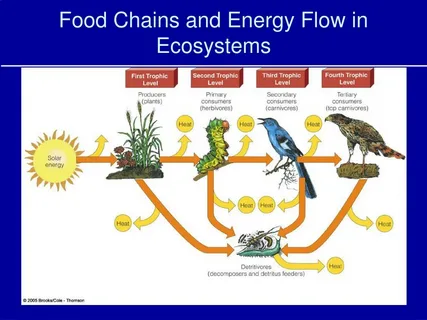Teach Connections with Food: Tasty Lesson Plan
Table of Contents
- Introduction
- What Are Conjunctions?
- Why Use Food to Teach Conjunctions?
- How to Start Teaching Conjunctions with Food
- Fun Activities to Teach Conjunctions with Food
- Conjunction Snack Match
- Conjunction Sandwich
- Taste and Choose
- Conjunction Cooking
- Tips for Successful Learning
- Example Lesson Plan: Teaching Conjunctions with Food
- FAQs
- Conclusion
Introduction
Ever tried to educate in conjunction with meals?
If you haven’t, you’re in for a deal with—literally!
Grammar may be complicated, in particular for younger college students.
But the use of food as a teaching tool can make studying about conjunctions more amusing and easier to understand.
Kids love food, and it’s something they relate to immediately.
So, why now not combine grammar training with snacks?
This technique will not only keep college students engaged but additionally assist them to not forget conjunctions better.
Let’s dive into how to teach this lesson effectively!
What Are Conjunctions?

Before we blend food with grammar, let’s quick outline conjunctions.
Conjunctions are phrases that hyperlink words, terms, or clauses.
They help shape sentences that make sense and add that meaning.
Think of them as connectors that carry special parts of a sentence collectively.
Here are some basic conjunctions and what they do:
- And adds information.
- Example: “I need a sandwich and juice.”
- But it shows assessment.
- Example: “I like apples, however, no longer bananas.”
- Or offers alternatives.
- Example: “Do you want tea or espresso?”
- Because it explains motives.
- Example: “I like pizza due to the fact it’s tasty.”
These are the center conjunctions to recognize, especially whilst coaching more youthful students.
Why Use Food to Teach Conjunctions?
Using meals to train conjunctions is powerful due to the fact:
- It’s visual.
- Students can see the examples proper in front of them.
- It’s interactive.
- Kids get to touch or even flavor the mastering materials.
- It’s relatable.
- Everyone has critiques about food, which makes it smooth to create sentences.
- It engages the senses.
- Touch, taste, and smell make learning sense greater actual and remarkable.
Imagine this:
Instead of just writing “I like apples and oranges,” children get to keep each end result in their palms and determine a way to connect them with conjunctions.
It makes grammar much less abstract and extra concrete.
How to Start Teaching Conjunctions with Food
Ready to start?
Follow these simple steps:
- Choose the proper food objects.
- Use snacks that are easy to deal with, like biscuits, fruit slices, crisps, or candy.
- Explain conjunctions first.
- Start with a brief review of conjunctions.
- Keep it simple: “Conjunctions are words that be part of different phrases.”
- Show meal examples.
- Use meal items to create simple sentences.
- For example, “Do you need chocolate or goodies?”
- Get college students concerned.
- Encourage them to make their very own sentences about the usage of the meals in front of them.
- Use repetition.
- Repeating conjunctions even as the use of food examples enables college students to apprehend quicker.
Fun Activities to Teach Conjunctions with Food
Here’s in which things get truly thrilling.
You’ve been given the food; now permit’s turn it into getting to know games.
These activities are clean to organize and paintings properly in classrooms or at home.
Conjunction Snack Match
- What You Need:
- Different snacks, like biscuits, fruit slices, crisps, or candy.
- How to Play:
- Lay out pairs of snacks, like “apple and orange,” “crisps or popcorn.”
- Show a conjunction and ask college students to suit the proper snacks with it.
- For instance, if you say “and,” college students pick snacks they’d need together.
- Why It Works:
- Kids get hands-on practice the use of conjunctions at the same time as making snack picks.
- It’s attractive and lets in for creativity.
Conjunction Sandwich
- What You Need:
- Bread slices, cheese, ham, lettuce, tomatoes, and so on.
- How to Play:
- Ask college students to create their own sandwiches and explain the ingredients using conjunctions.
- Example: “I need cheese and lettuce, however, no tomato.”
- They want to describe their selections step-by-step.
- Why It Works:
- This hobby is interactive and lets in college students to combine language talents with an amusing challenge.
- It’s all about constructing (actually and grammatically) one step at a time.
Taste and Choose
- What You Need:
- Sweet biscuits, sour sweets, salty crisps, etc.
- How to Play:
- Let college students taste specific foods and describe their alternatives using conjunctions.
- Example: “I like candy biscuits; however, I don’t like sour candies.”
- Why It Works:
- It’s sensory-primarily based studying, which keeps kids excited and concerned.
- They hyperlink conjunctions to actual emotions and tastes.
Conjunction Cooking

- What You Need:
- Simple elements like fruit salad components or cereal blend objects.
- How to Play:
- Set up a simple no-prepare dinner recipe.
- As students mix components, they ought to describe their movements with the usage of conjunctions.
- Example: “I delivered grapes and bananas because I like them together.”
- Why It Works:
- This technique combines meal prep with language mastery.
- It’s a creative and practical way to enhance grammar.
Tips for Successful Learning
Here’s how to make certain your food-based totally lesson is a hit:
- Keep it simple.
- Stick to primary conjunctions like and, but, or, and because.
- Be patient.
- Some students may need more time to comprehend.
- Encourage creativity.
- Let students give you unique combinations and sentences.
- Use praise.
- Positive reinforcement is going in a protracted manner.
- An easy “Well executed!” can raise self-belief.
- Repeat often.
- The more they pay attention and use conjunctions, the faster they’ll learn.
Example Lesson Plan: Teaching Conjunctions with Food
Here’s a pattern lesson you may try in your study room or at home.
Objective:
Students will research and use conjunctions like and, but, or, and because through interactive meal activities.
Materials:
- A style of snacks: biscuits, crisps, end result, candies
- Paper plates for every student
- Markers for writing sentences
Lesson Outline:
- Introduction (five minutes)
- Briefly explain conjunctions.
- Use easy sentences: “Conjunctions be part of phrases and thoughts.”
- Activity: Conjunction Snack Match (10 minutes)
- Lay out unique snacks and ask college students to pair them the usage of conjunctions.
- Group Work: Build-a-Sandwich (15 mins)
- Students make sandwiches and give an explanation for their selections using conjunctions.
- Discussion (10 minutes)
- Ask college students to share their sentences with the class.
- Correct errors lightly.
- Wrap-up (five minutes)
- Review the conjunctions discovered.
- Ask for one sentence from each scholar.
FAQs
1. What age organization is that this lesson for?
- This lesson works great for number one school college students, elderly five-eleven.
2. Do I want to apply real meals?
- No, you may use toy meals or food pictures if real food isn’t an alternative.
3. Is this secure for youngsters with hypersensitive reactions?
- Yes, so long as you take a look at for allergies in advance.
- Adapt the food items if essential.
4. Can I use this approach with older college students?
- Yes!
- Use more complicated conjunctions like even though, at the same time as, or considering that.
- Adjust the examples and sports to match their degree.
5. What if a scholar struggles with information?
- Be patient and use extra examples.
- Repetition can help solidify expertise.
6. How frequently should I repeat this lesson?
- Ideally, repeat as soon as every week until college students display self-belief in the usage of conjunctions.

Conclusion
Teaching grammar may be amusing, especially in case you teach in conjunction with food.
It makes learning interactive, hands-on, and loads more engaging.
Students are more likely to remember grammar rules once they connect them to a real-lifestyle pastime.
The key is to preserve matters simple and fun.
If you’re making learning sense like play, kids don’t even understand they’re getting to know!




